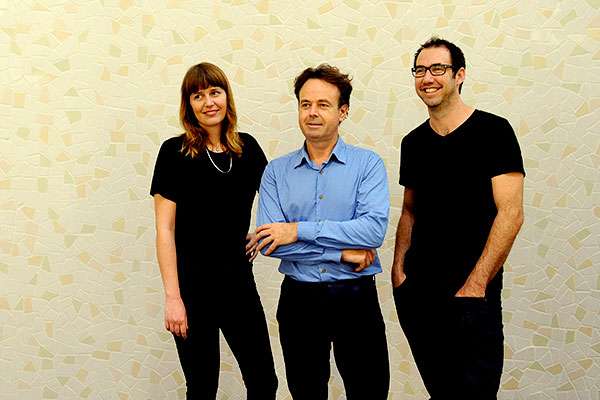Living in a material world

A pop-up, waterproof, solar-powered shelter. It sounds like science fiction, but a new multi-disciplinary research team is making this dream a reality. The 'Architextile' project combines architecture, textiles and material science and has the potential to revolutionise on-the-ground services in conflict and disease-affected areas.
Medics parachute out of a transport plane; their supplies follow, lightweight and durable. Within minutes, they've erected a series of temporary shelters, which are already using their in-built solar panels, made possible by conductor thread woven into the textile's external skin membrane to produce their own light and power.
The architectural design of the temporary shelter is formulated through the meshing of 3D modelling, weaving and knitting techniques. The shelter, waterproofed through coatings and additives laid into the fibres of the textile, is able to withstand wind, rain and harsh elements in both hot and cold climates. The design is flexible so the shelters can be packed up and shipped out as quickly as they are erected.
"Conceived for natural disaster relief, war zones and commercial applications, the shelter positions new technologies in textiles and architecture through analogue and digital design," explains UTS's Professor of Spatial Design, and leader of the Architextile project, Benedict Anderson.
Known as Architextiles, the project aims to build an interactive, self-sustaining and waterproof shelter from textiles that can be flown to a disaster zone, assembled by non-skilled people and, within minutes, generate its own power.
It was born out of a workshop held at the CSIRO's Future Manufacturing Flagship, Materials Science and Engineering in Geelong last year. The ideas that have combined to create Architextiles were developed during the stay of textiles designer Ursula Wagner and leading interactive textiles expert and Professor at the University of the Arts Berlin and a Vice-Chancellor's Distinguished Visiting Scholar with UTS's Centre for Contemporary Design Practices Gesche Joost. Their expertise, along with that of CSIRO scientists and fellow academics from the Faculty of Design, Architecture and Building, encompass textiles, textile coatings, wearable computation and architectural design.
"During the workshop, we developed a number of concepts and eventually settled on this idea of Architextiles," explains Anderson. "We explored the tectonic or structural properties of textiles and how we might apply them architecturally."
This premise has spawned the current Architextile project, which has been funded by an ATN-DAAD (German Academic Exchange Service) Joint Research Co-operation Scheme grant. The project now includes the expertise of the University of the Arts Berlin textile specialist Ebba Waldhör, UTS Senior Lecturer in Architecture and advanced modelling expert David Pigram and CSIRO's materials scientist Dr Louis Kyratzis. Together, they hope to develop a world-class product.
"Textiles in architecture has been around for decades – we've seen flowing sails in building design for many years," says Pigram. "However, recent advances mean the prospect of using textiles as the primary construction material is now within our reach."
The team's research will focus on three fields of investigation in textile fabrication: fibres and yarns, weave structures and 3D architectural modelling. The first step will be modifying the physical and chemical properties of fibres using polymers and graphite coatings to develop 'smart' yarns that can double as construction materials.
Waldhör explains, "My role in the project is to investigate the material properties such as water and air permeability, flexibility, durability and appearance. By integrating conductive yarns and fibres into the textile we can achieve flexible and lightweight energy sources that can provide light, warmth and communication."
Next, methods for creating three-dimensional shapes through new weaves and bindings will need to be developed.
"From a textile perspective this project is very intriguing," continues Waldhör. "The possibility to turn a two-dimensional textile into a three-dimensional shape in the manufacturing process opens up new ways of thinking about surface in relation to form. The limitations of conventional machines are a challenge however – most knitting machines, for example, are built to make garments, not houses."
The final step will see the team write programming protocols between the 3D modelling software and the looms, effectively translating architectural and design principles into textile tectonics.
The project aims to have a prototype structure, measuring around three-square meters, ready by the end of this year, with a view to getting more potential partners on board to refine and improve the model.
Anderson acknowledges that's particularly ambitious. "First, we'll be undertaking small-scale tests to work out the best textile and fabric structure and then we'll figure out how we can make it self-supporting. It requires designing through a parametric system where all the parts – the weave, joins and structure – work together to affect the form of the shelter.
"For example, weaving with conductor thread is a challenge textile-wise, but also in transferring power sources. The flexible battery and solar panels have been invented by Dr Louis Kyratzis but we'll need to work out how best to integrate them to come up with a construction that's reliable, sustainable and durable."
While Anderson concedes the old-fashioned tent isn't about to become obsolete any time soon, the impact of developments in this newly evolving area shouldn't be underestimated.
"Dropping a canvas tent is always going to be cheaper, but the way this project allows such seamless integration with technology opens up so many more applications. Not only do we have a structure that's self-sustaining, constructing it from textiles offers a zero waste production process whilst maximising flexibility."
The inherent insulation properties of textiles, like wool-polymers, means these structures can both retain warmth in cold climates and deflect heat in hot climates.
"This opens up applications not only for disaster relief sites but also remote communities and mining sites in Australia and worldwide," Anderson says.
Provided by University of Technology, Sydney




















